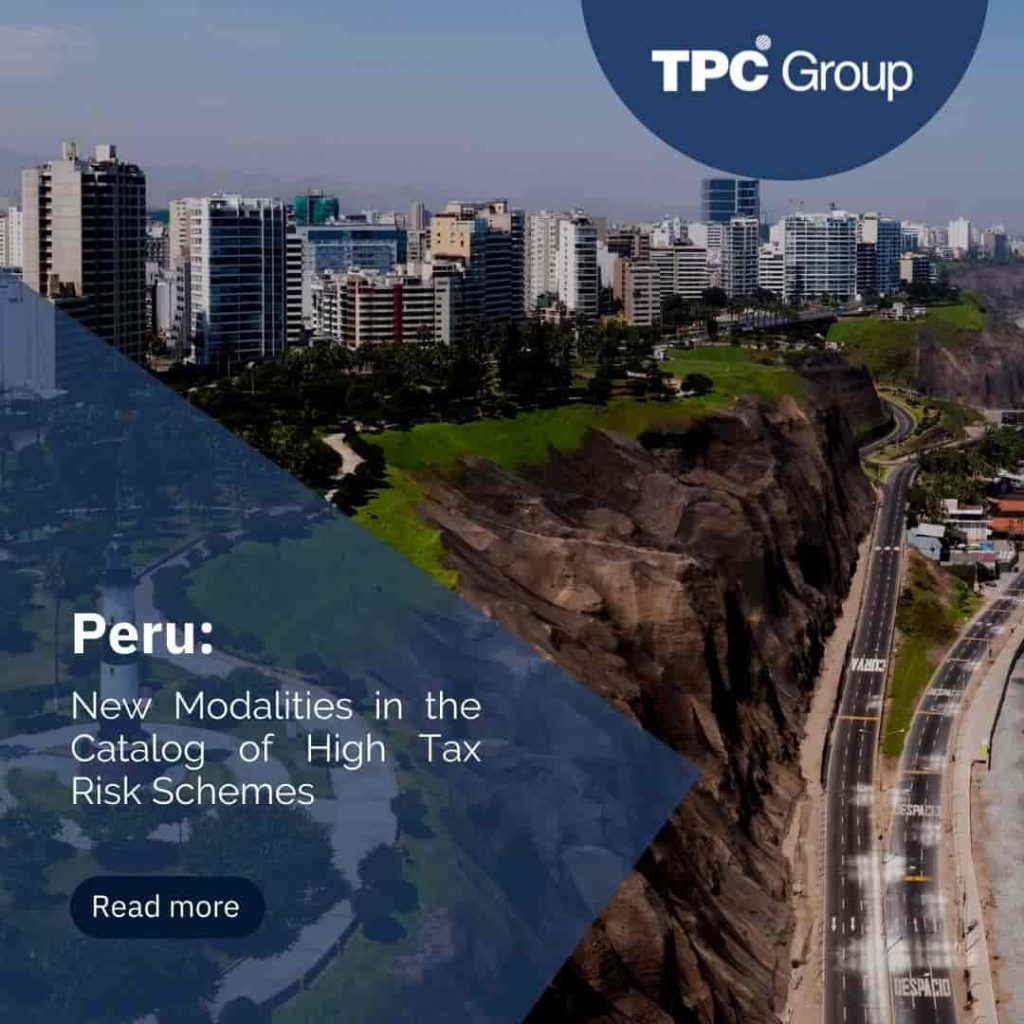On October 11, 2022, the SUNAT (Superintendencia Nacional de Aduanas y de Administración Tributaria – National Superintendence of Customs and Tax Administration) expanded the number of high-tax-risk schemes. In this regard, the “Catálogo de Esquemas de Alto Riesgo Fiscal” (Catalog of High Tax Risk Schemes) was updated with 8 more modalities for obtaining undue tax advantages.
The objective of the Catalog
To provide taxpayers, legal, and tax advisors with these high tax risk schemes to avoid practicing such actions, which will be mainly inspected by SUNAT.
There are already 13 tax schemes described by SUNAT, expected to motivate taxpayers to voluntarily and timely comply with their tax obligations.
Transfer Pricing
One of the modalities of potential tax noncompliance is the intermediation in the sale of minerals through a company without an economic basis. It occurs when a company domiciled in Peru sells mineral concentrate, agreeing on an undervalued price to a company without an economic basis and located in a tax haven.
Subsequently, the acquiring company sells the same mineral to a client domiciled in a third country and at a significantly higher price. The final destination of such goods is different from the one invoiced. The mineral leaves Peru and goes directly to the client in the third country.
Thus, part of the profit generated by the sale of the mineral concentrate is transferred to the tax haven. Finally, the company domiciled in Peru pays a lower income tax in the country.
Information according to Country-by-Country Reports
According to the information transfer pricing statements (Country by Country Report), which are automatically exchanged with different tax administrations around the world, transactions involving the sale of minerals with tax havens amount to an annual average of US$ 2 billion.
However, according to customs information, exports to these countries or territories only amount to US$ 8 million per year.
Source: Diario El Peruano 12/10/22




